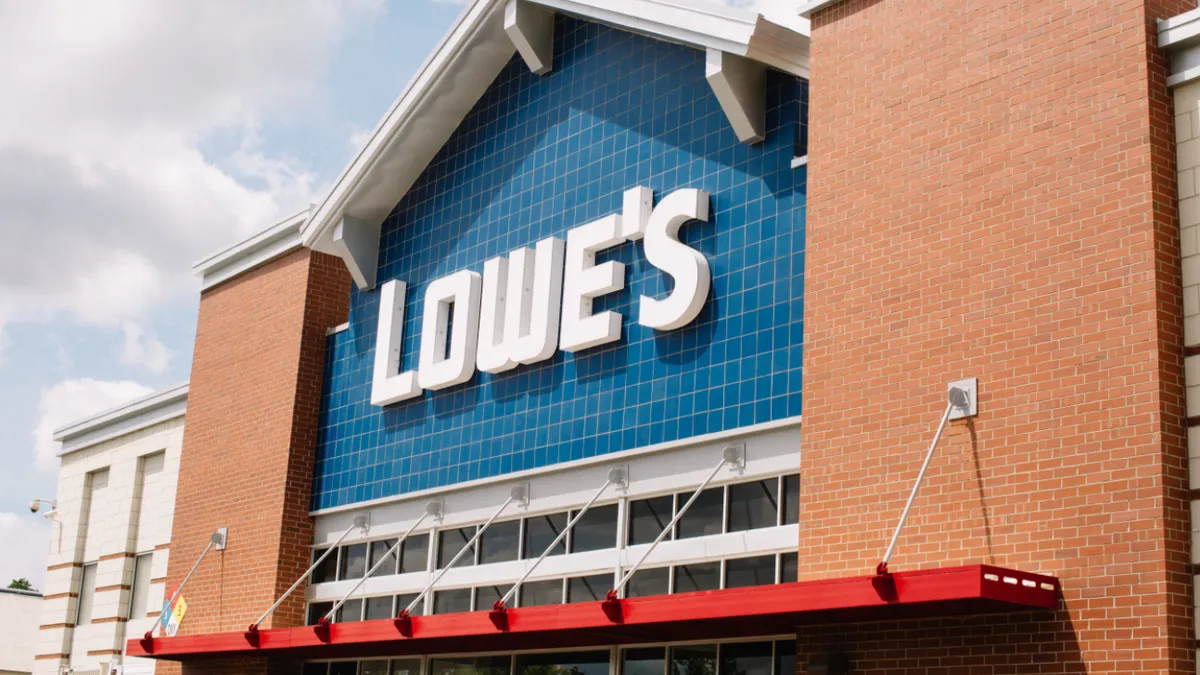Dive Brief:
- As Lowe's laps a period last year that saw an explosion in consumer home projects, sales growth at the retailer slowed and comparable sales declined by 2.2% in the U.S.
- At the same time Lowe's posted increased operating and net profits for the second quarter. Earnings per share beat FactSet consensus estimates by around 25 cents per share, according to figures cited by Telsey Advisory Group.
- During Q2, Lowe's Pro segment grew by 21% while installation services grew 10%. Sales on Lowes.com increased 7%, on top of 135% growth in the same period last year, the company said in a press release.
Dive Insight:
Home improvement retail had a great year in 2020. With interest rates helping to drive up home prices, and consumers stuck at their houses as a pandemic spread rapidly around the world, many Americans invested in their homes. Lowe's sales for the year increased by nearly 25%.
On a conference call with analysts, Lowe's CEO Marvin Ellison credited home price appreciation — which gives consumers the confidence to invest in their homes — and an aging housing stock with the boom in DIY projects during the pandemic. The pace of buying couldn't last forever, though. There are only so many decks to build and bathrooms to remodel.
Comp declines across Lowe's and in its U.S. business "showed a deceleration as DIY consumers return to more normal activities," Telsey Advisory Group analysts led by Joe Feldman said in a research note. At the same time, the retailer posted sizable growth in its professional segment and "strong comps" in its décor products, which got a boost recently from a series of home décor curation partnerships.
According to GlobalData research, consumers doing at least one home or garden project during the quarter fell to 66% from 73% in 2020. In that context, the comp declines are perhaps understandable given the tough comparison against a banner 2020. Yet rival Home Depot's 4.5% increase puts pressure on Lowe's.
Of the 31.3% two-year sales gains Lowe's posted, GlobalData's Managing Director Neil Saunders said that the retailer is "now struggling to hold onto them in the same way that Home Depot has been able to." Digging in to the reason why, Saunders noted the drop in DIY projects "appears to have come mostly from more occasional improvers or those who just undertook one or two projects during the pandemic." Those shoppers are more likely to shop at Lowe's because they don't have established loyalty, Saunders said. However, Lowe's may have made inroads with younger shoppers who may be "stickier," Saunders noted.
In its Pro segment, Lowe's is "coming from behind as Home Depot is still the preferred choice of a majority of professionals," Saunders noted. He added, "Some of this is habitual, but a lot is also down to a perception that Home Depot has a superior range, is better at having items in stock, and offers a wider selection of services."
As it tries to differentiate itself, Lowe's has been leaning on its "Total Home" strategy — which focuses on the company's assortment, online business, localization and the Pro segment — which Ellison said in a statement is working.














